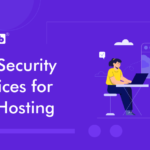Organizations need SIEM tools to secure digital assets and networks to ensure safety of operations. Splunk and SolarWinds Log Event Manager are the top security information and event management tools. Both SIEM solutions vary; however, they provide high-performing features that ease threat detection and response. This SolarWinds vs. Splunk article will discuss the key differentiators between SolarWinds and Splunk.
What is SolarWinds?
SolarWinds is a tool used for troubleshooting network connectivity issues in regular activities. It offers automated network discovery services like switching portmapper, port scanners, IP Network browsers, etc.
What is Splunk?
Splunk is a software platform used for searching, analyzing, and visualizing the data collected from applications, devices, websites, and sensors that compose your IT infrastructure and business.
Splunk vs Solarwinds
1) Threat Detection
Splunk
Splunk utilizes machine data from the on-site and multi-cloud deployments and provides complete visibility for malware threat detection. Splunk User Behavior and Enterprise Security solutions identify unknown, insider, and outside threats within the enterprise networks.
Splunk Enterprise Security is developed on the data platform that offers visibility and scale into the security data and is enhanced with a business perspective to give valuable insights.
SolarWinds
SolarWinds Security Event Manager has real-world automated threat detection capabilities, with constant system-wide threat detection, alerting, and monitoring. Users will set custom alerts to identify threats, like IDS/IPS systems with the infection. Symptoms, crash reports, and event stream triggers.
2) Data Analysis
Splunk
Splunk’s machine learning allows users to carry out investigations, get meaningful insights, discover the cause of the incident, and make use of historical trends. Splunk also utilizes behavior analytics and graph analysis for detecting threats using compromised accounts, data exfiltration, lateral movement, and privileged account abuse.
SolarWinds
SolarWinds solution gathers logs from endpoints, like firewalls, IPS/IDS devices and apps, servers, switches, routers, and other applications. After that, users can match the log data against the threats using compromised accounts and privileged account abuse.
3) Security Alerts
Splunk
Splunk handles alert fatigue through risk-based alerting. Risk attributions are created and sent to the risk index when distrustful activity is identified within the network. If the enterprise’s risk score satisfies its threshold, the solution will offer analysts the perspective for processing the threats.
SolarWinds
The automation abilities of SolarWinds Security Event Manager are developed to reduce the requirement of the user detection efforts. But, consumers can set up custom alerts to identify potential security issues in the real-world, which will enable them to perform formal action when it is needed.
For distrustful activity, their established File integrity monitoring filters assure that only crucial file modifies trigger alerts.
4) Incident Response
Splunk
Splunk Enterprise Security enables us to perform in-depth investigations to make informed decisions and use rapid-response capabilities. With quick investigations, users can handle threats through Risk Scoring, Threat Intelligence, and Notable Events to determine incident response.
Moreover, Splunk Adaptive Response automates verification and response actions, allowing users to handle threats rapidly and make decisions and actions while responding and adjusting to them.
SolarWinds
SolarWinds will respond against the malicious accounts, applications, etc. Users will computerize their responses to accelerate detected cyber threat remediation as per the log activity or event types. Moreover, administrators will set up a tool for customizing their responses to identified security threats.
5) Recent Product Improvements
Splunk
The recent extensions to Splunk include Splunk User Behavior Analytics 4.0, which allows us to create and load their machine learning models for identifying custom anomalies and threats.
SolarWinds
The latest version of SolarWinds was released on February 20, 2017. Latest features like management console updates, single sign-on, and the capability to use the LEM manager through SSH port 22 or port 3022.
6) Strengths and Weaknesses
SolarWinds
SolarWinds provides a well-incorporated solution due to its simple architecture, strong out-of-the-box features, and easy licensing. It supports various event sources and provides some threat restraint that is not available in rival SIEMs.
Research Firms indicate that SolarWinds is a closed environment, making it challenging to incorporate with the third-party security solutions like threat detection and threat intelligence feeds.
Splunk
The large partner environment of Splunk offers integration and Splunk-specific content using the Splunkbase app store. Splunk has a comprehensive suite of solutions that enables the users to grow into the platform eventually and advanced analytics capabilities in various ways across the Splunk environment.
However, Splunk does not provide the appliance version, and various clients have raised concerns about the licensing model and implementation cost.
7) Deployment
SolarWinds
We can deploy SolarWinds as a tempered virtual appliance running on the Microsoft Windows Hyper-v or VMware ESC.
Splunk
We can deploy Splunk as software on-site, through the SaaS solution Splunk Cloud, in a private or public cloud, or a hybrid deployment.
8) Pricing
Splunk
Splunk’s pricing is as per the number of users and the amount of data consumed in a day. A free version will be available for a single user and up to 500 MB of data daily.
SolarWinds
SolarWinds cost per node, commencing with 30 nodes at $4,995.
9) Ease of Use
SolarWinds
SolarWinds reduces the complexity of conventional enterprise solutions, enabling you to maintain and deploy the products with the least investment and effort, irrespective of the Organization’s size. Using the THWACK community, you can discuss with users.
Splunk
Splunk ES is convenient to use. The solution will run centrally, and the user interface will be dynamic. Splunk online training also includes a community forum where we can use the support from other users.
10) Application Monitoring
SolarWinds
SolarWinds provides strong application management and monitoring tools that assure non-technical individuals and security teams can fix both simple and complex problems using its information dashboard.
Splunk
Splunk provides next-level application monitoring using its group of products called Splunk Application Performance Monitoring(SAPM). Splunk APM is externally developed for cloud-oriented applications and utilizes an open standard methodology for collecting data.
Conclusion
Selecting a suitable SIEM tool for your organization can be difficult. As per your enterprise’s requirements, existing architecture, and preferable vendors and software, there are numerous aspects to weigh. In this SolarWinds vs Splunk blog, we have furnished an in-depth analysis of the most widely used SIEM tools, Splunk and SolarWinds. I hope this blog will assist you in choosing the right SIEM tool. If you have any queries, let us know by commenting below.
Author Bio:
 Kalla Saikumar is a technology expert and is currently working as a Marketing Analyst at MindMajix. Write articles on multiple platforms such as Tableau, PowerBi, Business Analysis, SQL Server, MySQL, Oracle, and other courses. And you can join him on LinkedIn and Twitter.
Kalla Saikumar is a technology expert and is currently working as a Marketing Analyst at MindMajix. Write articles on multiple platforms such as Tableau, PowerBi, Business Analysis, SQL Server, MySQL, Oracle, and other courses. And you can join him on LinkedIn and Twitter.



